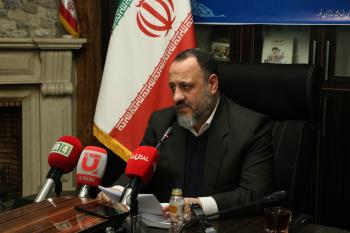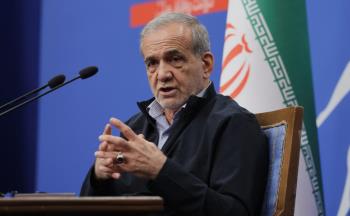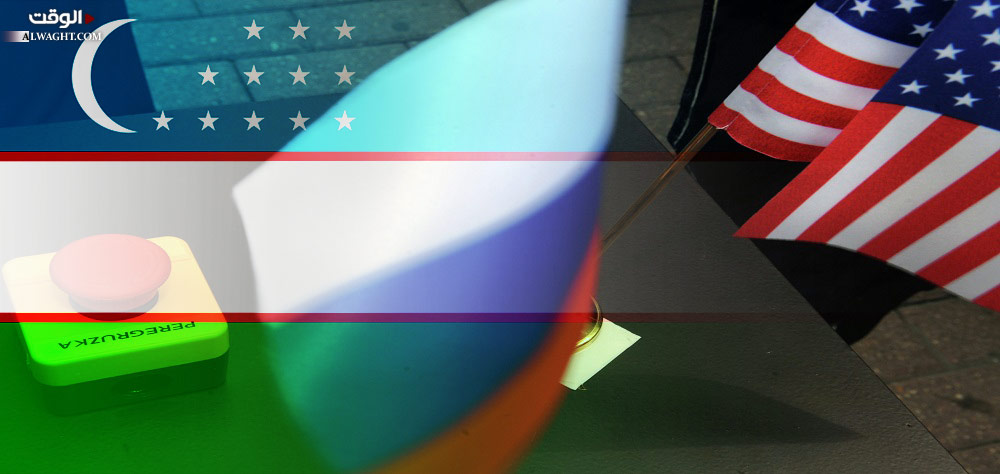Alwaght- Unveiling the new national security doctrine by President Donald Trump and introducing some changes in approaching the US allies can be somehow problematic to Washington. For example, according to the past administrations’ doctrines, Pakistan was an ally to the US, but the new strategy pushed Islamabad to the sidelines and replaced it with India.
17 years after the invasion of Afghanistan, the American Vice-President Mike Pence believes that the American strategy is coming to fruition as “we have put them (Taliban) on the defensive.” Pence singled out Pakistan in his address to the American troops in Afghanistan on Thursday, accusing the country of “providing a safe haven” to Taliban and other terrorist groups for a long time. He, however, added that those days have gone.
Now a question looks unavoidable: Does the American president have a plan for replacement of Pakistan by taking such approach? This question comes while presently a major part of the military equipment meant to Afghanistan go to their destination through the Pakistani soil. If the Pakistani leaders block the military equipment transit to Afghanistan in retaliation, the Americans will have no other transit routes but through some alternative countries like Uzbekistan. But this will not be an easy job. Odds are that before any American movement towards Uzbekistan in quest of substitute for Pakistan, Russia takes faster moves to prevent American sway gain in Central Asia. And that will be the onset of a new Washington-Moscow race for influence.
It seems that the US is increasingly moving towards this replacement quest. On September 20, Trump talked on the phone with the Uzbek President Shavkat Mirziyoyev. The two discussed a range of matters from regional security and exploring the opportunities for richer cooperation to Uzbekistan’s support of the White House strategy in South Asia and the American war in Afghanistan. Moreover, the reports say that the Afghan-Uzbek relations have begun to improve. In early December, President Ashraf Ghani of Afghanistan visited Tashkent to take part in the regional security forum held between Afghanistan and Uzbekistan. Serious efforts to set up strategic Afghani-Uzbek cooperation are underway under the American supervision. A week after Ghani’s Tashkent visit, foreign ministry of Uzbekistan published a statement in which it unveiled a dialogue process between the Central Asian states and Afghanistan, dubbed C5 + 1. The process is expected to serve as an effective platform contributing to negotiations on a spectrum of issues including the regional issues and common UN-supervised initiatives for sustainable peace and development. Only two days after phone talk with Trump, the Uzbek Foreign Minister Abdulaziz Kamilov flew to Kabul.
Apparently, Central Asia remains of vital significance to the American security interests. The new doctrine highlights this importance as it says that the US should seek a toehold in Central Asia to counter the dominance of the rival powers there. Without a shadow of a doubt, the rival powers meant by Washington are Beijing and Moscow which are labeled “revisionist powers” in the new doctrine published in mid-December.
Russia in 2014 founded the Eurasian Economic Union (EAEU), a regional bloc comprised of Belarus, Kazakhstan, and Russia whose leadership over the bloc is indispensable. The news did not appeal to the US. Two years before signing the EAEU treaty, Hillary Clinton, the then Secretary of State, had asserted that the US was trying to prevent Russia from recreating a new version of the Soviet Union under the ruse of economic integration.
“There is a move to re-Sovietize the region. It’s not going to be called that. It’s going to be called a customs union, it will be called the Eurasian Union and all of that,” Clinton said in a Dublin conference hours before her meeting with the Russian Foreign Minister Sergei Lavrov.
“Iterations of a Moscow-backed plan to deepen economic ties with its neighbors”, she added.
It is glaringly apparent that, as many analysts think, the Russian approach towards its power and sway in Central Asia and its struggle to save and expand it stands as the main driving force behind the US quest for a foothold in the region for the final aim of curbing the burgeoning Chinese and Russian influence.
In general, the US regional strategy in Central Asia is majorly based on forging strategic depth for Afghanistan. After all, the Trump administration wants to lay the foundation for a high level of American influence in Central Asia as it suffered a downturn in the recent years amid Moscow and Beijing campaign of sway gaining.
In the eyes of Washington, the new Uzbek leader is a reformist individual and thus is fit to get new roles. Trump’s ideal now is re-opening the Karshi-Khanabad Airbase in Uzbekistan, which was closed to the American forces in 2005, as a transfer terminal for the American military in Central Asia. After the 9/11, the US struck short-term deals with the Central Asian states, gaining launching pad for its operations in Afghanistan. Karshi-Khanabad Airbase, also known K2, alone hosted 1,500 American troops as the Afghanistan campaign unfolded.
But the US is in the know when it comes to the activism of the rivals like Russia in Central Asia region. Washington knows that the Russians hold the upper hand, and they use various instruments at their disposal to regulate the regional countries’ behavior and policies in tune with Russia’s. Moscow is set to host a regional security meeting of members of the Commonwealth Independent States, a regional bloc created in 1991 and comprised of Azerbaijan, Armenia, Belarus, Georgia, Kazakhstan, Kyrgyzstan, Moldova, Russia, Tajikistan, Turkmenistan, Uzbekistan, and Ukraine. Reports suggest that the Uzbekistan president has accepted the Russian invitation and will attend. The Uzbek foreign minister in a press conference in late July said: “A new period of Moscow-Tashkent relations has just begun.”
At loggerheads with Tajikistan and Kyrgyzstan over the energy resources in the past two decades, Uzbekistan tries to move closer to the US in a bid to check the change of balance of power with its regional rivals with which Russia has warm relations. As part of this view, Tashkent in 2009 offered to the US use of Termez Airbase. With these developments, it appears that Central Asia will be a theater for a new wave of competitive diplomacy of Moscow and Washington.



























